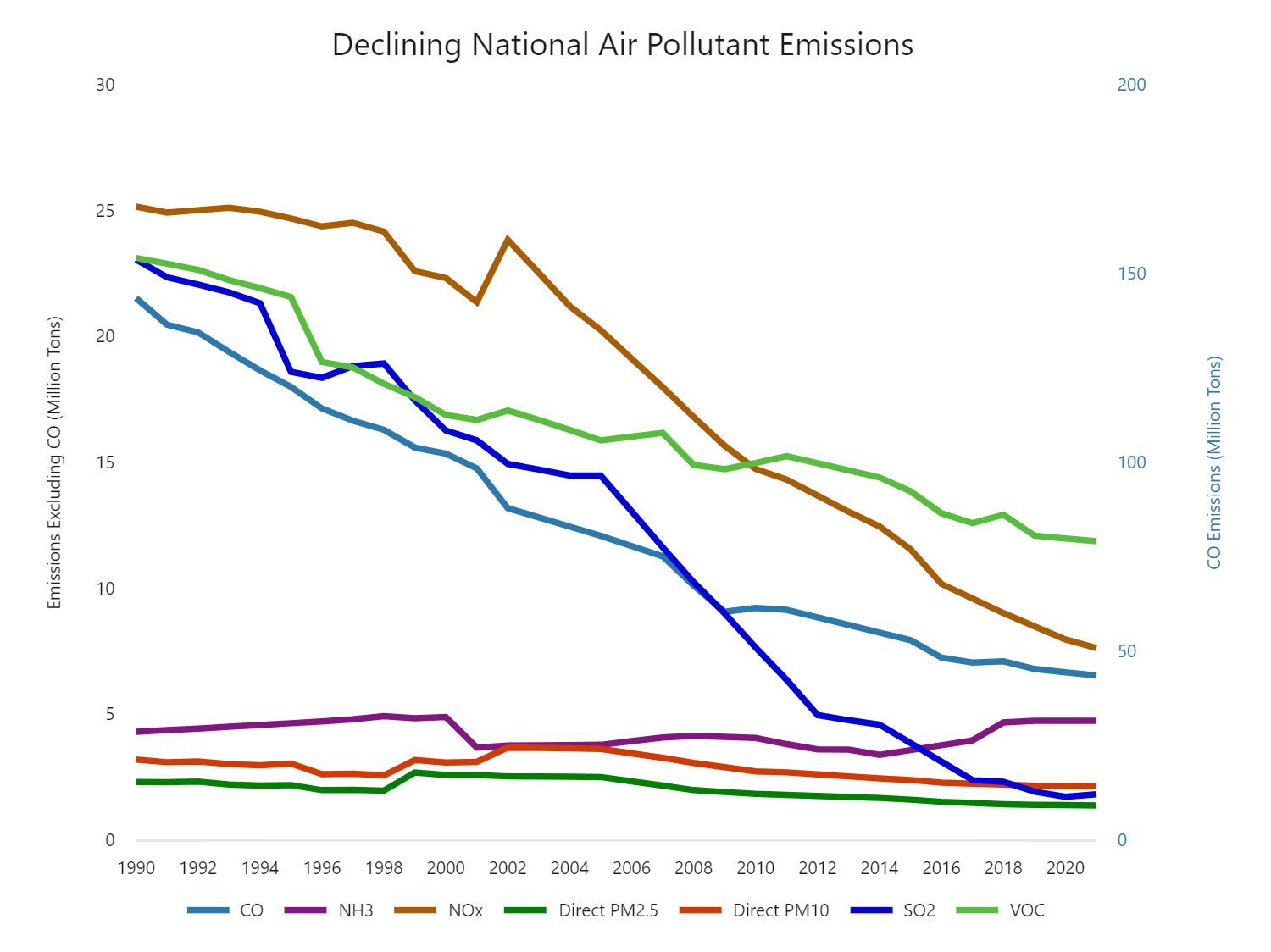Air Pollution Legislation
In 1930, 63 people died and 1000 were sickened in Belgium when a phenomenon referred to as temperature inversion caused pollutants to be trapped near the surface, leading to a sudden spike in atmospheric sulfur levels. In October 1948, a thick cloud of air pollution formed above the industrial town of Donora, Pennsylvania. The cloud which lingered for five days, killed 20 people and caused sickness in 6,000 of the town’s 14,000 people. In 1952, the infamous London fog in which acid aerosols trapped in the lower atmosphere killed 4000 people. Events like these alerted us to the dangers that air pollution poses to public health.
Clean Air Act
In the United States, several federal and state laws were passed, including the original Clean Air Act of 1963, which established funding for the study and cleanup of air pollution. However there was no comprehensive federal response to address air pollution until Congress passed a much stronger Clean Air Act in 1970. That same year Congress created the Environmental Protection Agency (EPA) and gave it the primary role in carrying out the law. Since 1970, EPA has been responsible for a variety of Clean Air Act programs to reduce air pollution nationwide. The Clean Air Act is a federal law covering the entire country. However, states, tribes, and local governments do a lot of the work to meet the Act’s requirements. For example, representatives from these agencies work with companies to reduce air pollution. They also review and approve permit applications for industries or chemical processes.
EPA’s Role
EPA’s mission is basic health and environmental protection from air pollution for all Americans. To achieve this mission, EPA implements a variety of programs under the Clean Air Act that focus on:
- reducing outdoor, or ambient, concentrations of air pollutants that cause smog, haze, acid rain, and other problems;
- reducing emissions of toxic air pollutants that are known to, or are suspected of, causing cancer or other serious health effects; and
- phasing out production and use of chemicals that destroy stratospheric ozone.
Under the Clean Air Act, EPA sets limits on certain air pollutants, including setting limits on how much can be in the air anywhere in the United States. The Clean Air Act also gives the EPA the authority to limit emissions of air pollutants coming from sources like chemical plants, utilities, and steel mills. Individual states or tribes may have stronger air pollution laws, but they may not have weaker pollution limits than those set by EPA. EPA must approve state, tribal, and local agency plans for reducing air pollution. If a plan does not meet the requirements, EPA can issue sanctions against the state and, if necessary, take over enforcing the Clean Air Act in that area. EPA assists state, tribal, and local agencies by providing research, expert studies, engineering designs, and funding to support clean air progress. Since 1970, Congress and the EPA have provided several billion dollars to the states, local agencies, and tribal nations to accomplish this.
State and Local Government’s Role
It makes sense for state and local air pollution agencies to take the lead in carrying out the Clean Air Act. They can develop solutions for pollution problems that require a special understanding of local industries, geography, housing, and travel patterns, as well as other factors. State, local, and tribal governments also monitor air quality, inspect facilities under their jurisdictions, and enforce Clean Air Act regulations. States have to develop State Implementation Plans (SIPs) that outline how each state will control air pollution under the Clean Air Act. A SIP is a collection of the regulations, programs, and policies that a state will use to clean up polluted areas. The states must involve the public and industries through hearings and opportunities to comment on the development of each state plan.
Outcomes of the Clean Air Act
For more than forty years, the Clean Air Act has cut pollution as the U.S. economy has grown. The combined emissions of the six criteria pollutants have continued to decrease while population, gross domestic product, energy consumption, and vehicle miles traveled have all continued to increase (Figure 6.14). The following is a summary of some of the accomplishments of the Clean Air Act:
- Clean Air Act programs have lowered levels of the six criteria pollutants – particulates, ozone, lead, carbon monoxide, nitrogen dioxide, and sulfur dioxide – as well as numerous toxic pollutants.
- From 1970 to 2012, aggregate national emissions of the six common pollutants alone dropped an average of 72 percent while gross domestic product grew by 219 percent (Figure 6.14). This progress reflects efforts by state, local, and tribal governments; EPA; private sector companies; environmental groups, and others.
- The emissions reductions have led to dramatic improvements in the quality of the air that we breathe.
- These air quality improvements have enabled many areas of the country to meet national air quality standards set to protect public health and the environment. For example, all of the 41 areas that had unhealthy levels of carbon monoxide in 1991 now have levels that meet the health-based national air quality standard. A key reason is that the motor vehicle fleet is much cleaner because of Clean Air Act emissions standards for new motor vehicles.
- Airborne lead pollution, a widespread health concern before EPA phased out lead in motor vehicle gasoline under Clean Air Act authority, now meets national air quality standards in most areas of the country.

Attribution
Zehnder, Caralyn; Manoylov, Kalina; Mutiti, Samuel; Mutiti, Christine; VandeVoort, Allison; and Bennett, Donna, “Introduction to Environmental Science: 2nd Edition” (2018). Biological Sciences Open Textbooks. 4.
https://oer.galileo.usg.edu/biology-textbooks/4
This work is licensed under a Creative Commons Attribution-Noncommercial-Share Alike 4.0 License.

